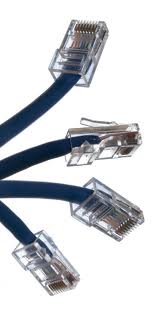In this day and age, people have come to expect at least a modest speed for their internet connection. In many urban parts of the UK, speeds of around 10MB per second are commonplace, with some homes experiencing five times that amount. Home internet access has become a prerequisite for many school pupils in their learning, but not all of them are so lucky.
For many children based in rural areas or internet blackspots or for those whose families cannot afford to pay a premium for access, getting the information they need in order to complete their homework or simply boost their knowledge is extremely challenging. This is something that was raised by Estyn, the Welsh education watchdog, and they’re not alone.
Call for more investment
Those in rural areas, even if they’re just on the edge of major conurbations such as Greater Manchester and Leeds/Bradford, will find getting even basic broadband a pain, which has seen people in high-powered positions call for investment in improving connectivity where there is none. David Nuttall, the MP for Bury North in Greater Manchester, is one such voice.
Of the £990,000 allocated to the region, Mr Nuttall is calling for a large chunk of that to go towards people in his constituency who are experiencing problems with their speeds and, in extreme cases, access.
“Those who live in areas which have very slow broadband access speeds are seriously disadvantaged in this digital age”, he said in an interview with the Bury Times.
“Although in recent months we have seen some progress — for example in Nangreaves thanks to the hard work of local residents — there is still much to be done”, he added.
Solution from above

Whilst fibre optic broadband the fastest form of broadband, satellite broadband offers much faster speeds for those in rural communities, without optical fibre cables.
Until something is done about access to fast broadband nationwide, those affected are left to ponder what, if any, alternatives are open to them. One could come in the form of satellite broadband, which can work as more than just a stopgap solution.
“Many people don’t realise the role satellite broadband has in filling in rural not-spots and connecting the last 5% of homes and businesses that will never get fast broadband over wires”, said Andrew Walwyn, CEO of EuropaSat.
“The latest generation Ka band satellite broadband services offer defined, predictable service levels at reasonable cost, with no geographical discrimination. Using a small set-top box and an outside mini dish it’s now possible to deliver up to 20 Mb fast broadband to any property in the UK or indeed Europe.”
